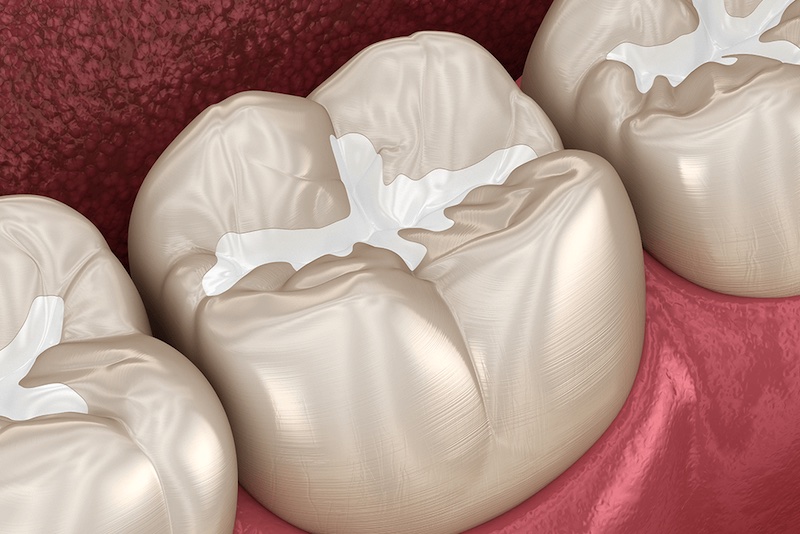Do you remember the last time you visited the dentist and had a filling done? For many of us, dental fillings are just a routine part of maintaining our oral health, but have you ever stopped to think about the amazing transformation that takes place during the procedure? From a tooth damaged by decay to a perfectly restored smile, dental fillings are a true work of art. In this blog post, we will take you on a journey through the dental filling procedure, from start to finish, and show you just how amazing and painless this process can be.
What are Dental Fillings?
Dental fillings are a tried-and-true solution for restoring the strength, function, and appearance of damaged teeth. But what exactly are they and how do they work?
In simple terms, dental fillings are materials used to fill cavities in teeth caused by decay. The filling material seals the hole left by the decay, protecting the tooth from further damage and restoring its shape and function. Dental fillings come in a variety of materials, including composite resin, amalgam, gold, and porcelain, each with its own unique properties and benefits.
Discover the Different Types of Dental Fillings and Choose the Right One for You
When it comes to dental fillings, one size doesn’t fit all. With a variety of materials to choose from, it’s important to understand the pros and cons of each type so you can make an informed decision. Let’s take a closer look at the different types of dental fillings and what makes them unique.
Composite Resin Fillings: Composite resin fillings are made of a mixture of plastic and fine glass particles. They can be color-matched to the shade of your natural teeth, making them an excellent option for restoring visible front teeth. Composite resin fillings are also relatively inexpensive, making them a popular choice for people who are budget-conscious.
Amalgam Fillings: Amalgam fillings, also known as silver fillings, are made of a mixture of metals, including silver, tin, copper, and mercury. They’re durable and long-lasting, making them a popular choice for restoring back teeth. Amalgam fillings are also relatively inexpensive, making them a good option for people who are budget-conscious. However, they’re not as esthetic as composite resin fillings, and the metal color can be noticeable in the mouth.
Gold Fillings: Gold fillings are made of a mixture of gold, copper, and other metals. They’re extremely durable and long-lasting, making them an excellent option for restoring back teeth. Gold fillings are also biocompatible, meaning they don’t cause an allergic reaction in the mouth. However, they’re also the most expensive type of filling, and their color can be noticeable in the mouth.
Porcelain Fillings: Porcelain fillings, also known as inlays or onlays, are made of a mixture of porcelain and other materials. They’re extremely esthetic and can be color-matched to the shade of your natural teeth, making them an excellent option for restoring visible front teeth. Porcelain fillings are also biocompatible, meaning they don’t cause an allergic reaction in the mouth. However, they’re also the most expensive type of filling, and they require multiple visits to the dentist for placement.
No matter what type of filling material you choose, dental fillings are an effective and affordable solution for restoring damaged teeth. So, talk to your dentist about your options and choose the right filling material for you. With the right dental filling, you’ll be on your way to a healthy and beautiful smile in no time!
A Step-by-Step Guide to the Dental Filling Procedure
The thought of getting a dental filling can be anxiety-inducing for many, but the process is actually quite simple and straightforward. Here’s a step-by-step guide to what you can expect during a dental filling procedure.
Step 1: Consultation and Diagnosis: Your first step will be to schedule a consultation with your dentist to discuss your dental problems and determine if a filling is the right solution. During this appointment, your dentist will examine your teeth, take X-rays, and discuss your options with you.
Step 2: Numbing: If your dentist determines that you need a filling, they’ll numb the area around the affected tooth with a local anesthetic. This will make the procedure pain-free and comfortable for you.
Step 3: Cleaning: Once the area is numb, your dentist will clean the tooth and remove any decay. They’ll then prepare the tooth for the filling material.
Step 4: Placement: The next step is to place the filling material in the cavity and shape it to fit the tooth. Your dentist may use a special light to harden the composite resin filling material. For amalgam or gold fillings, your dentist will use a special tool to shape the filling and make sure it fits snugly in the cavity.
Step 5: Polishing: Finally, your dentist will polish the filling to ensure a smooth and comfortable bite. They’ll also make any final adjustments to ensure that the filling fits properly and is comfortable in your mouth.
Step 6: Aftercare: Once the procedure is complete, your dentist will provide you with instructions for caring for your teeth and the filling. They’ll also schedule a follow-up appointment to make sure the filling is working as it should.
That’s it! A dental filling procedure is a simple and straightforward solution for restoring damaged teeth. So, if you’re experiencing dental problems, don’t hesitate to book an appointment with your dentist today. With a dental filling, you’ll be on your way to a healthy and beautiful smile in no time!
Conclusion
In conclusion, dental fillings are a simple and effective solution for restoring damaged teeth. With a wide range of materials to choose from and a straightforward procedure, dental fillings are a convenient and affordable way to improve your oral health. If you’re experiencing dental problems, don’t hesitate to schedule an appointment with our dentist today. With a dental filling, you’ll be on your way to a healthy and beautiful smile in no time!

